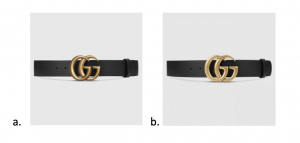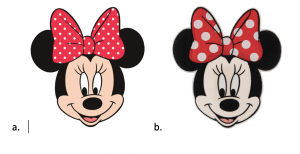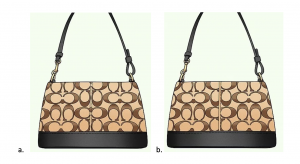Boy, is it ever hot in Tennessee right now. And, the mosquitos are thriving. Like an annoying mosquito on a warm, summer night, counterfeit products are hard to squish.
The most significant indicator of an authentic product is the ™ or ®. However, many large brands do not use trademark symbols on their products, believing it stifles the aesthetic of the design. By leaving these well-known and understood trademark symbols off products, brands open themselves up for fakes and frauds to take advantage.
See if you can tell which items below are real and which are fake (answers at the end of the post):



Counterfeits issues are not limited to trademark law; in fact, they bleed into copyright and patent law as well. Trademark law prevents fraudsters from creating a product or service and slapping someone else’s logo or name on it, like taking the Coach logo and stitching it on a homemade purse. Copyright law prevents bad actors from using copyrighted material, such as images or characters, on works not associated with the original creator. Lastly, patent law prevents copycats from making similar products without obtaining permission.
If knockoffs are so common, what’s being done to aid creators?
When President Bush signed the Stop Counterfeiting in Manufactured Goods Act in 2006, efforts were made to allow the government to seize counterfeit goods as well as any products that were used in the creation of counterfeit goods. While the Act helped a little, it was like trying to use duct tape to stop Niagara Falls. With the upward trend of the Internet and online marketplaces, counterfeits also took an upward trend. If you want to keep up with the Joneses, but find yourself financially unable to do so, hit the internet. Counterfeit and infringing goods have found their way onto popular platforms like eBay, Etsy, Facebook marketplace, and Amazon.
But the Internet has grabbed its fly-swatter. Online marketplaces have created avenues to streamline the detection and removal of counterfeit goods. For example, eBay instituted the VeRO Program (Verified Rights Owners Program). Amazon allows brand owners to register on its Amazon Brand Registry (with the requisite federal trademark rights). Among other benefits to brand owners, the Amazon Brand Registry requires any person trying to sell products on Amazon to get permission from the rights-holder before any products originating from the brand owner hit the marketplace.
In addition to these great programs, you can take steps yourself to prevent others from counterfeiting your goods:
Answers to the questions above: a; b; a
Trust Tree Legal, P.C.
Mailing address:
798 Berry Road #41400
Nashville, TN 37204
Meetings by appointment only.